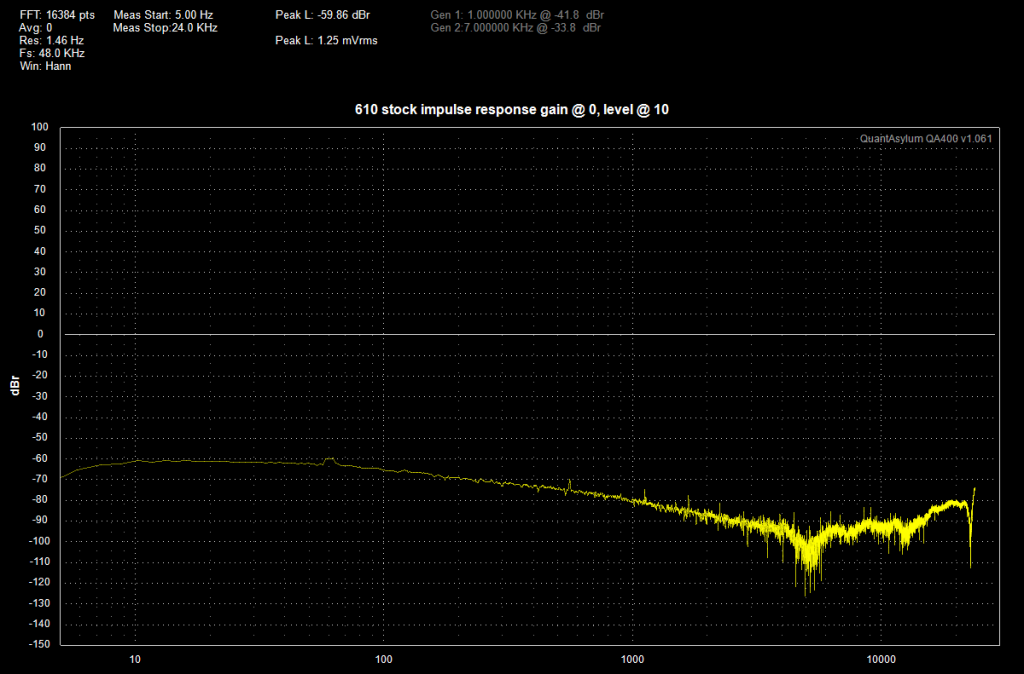There are a couple of ways to test the LA 610′s frequency response. The traditional method is by using a swept tone. The other is by using an impulse response, or “chirp” as the good folks at Audio Precision call it.
The nice thing about impulse response is that it has has a theoretically infinite frequency spectrum. If you present a perfect impulse to a device, then the output from the device will be its frequency response. To measure it, we use a Fast Fourier Transform of the output, and then generate a plot from it. I prefer the impulse response test over the swept tone method, so that’s what I’ll be using to test these LA 610′s.
Since a mic preamp’s frequency response can vary across its gain spectrum, I decided to perform the impulse response test across all five settings of the LA 610′s gain switch, and leave the “level” pot set at 10. Like earlier tests, I used a -40dBV impulse signal (0.01v rms). And that’s when I ran into problems. Remember the earlier blog about the THD+N tests? We used a -40dBV input signal for that test, too. The THD+N figure was a little over 35% under those conditions. Turns out there was something similar when conducting the frequency response test. By the time I got to the “0″ setting on the gain switch, the -40dBV test pulse was too hot. The LA 610 began to saturate, and the frequency response plots were…kind of wacky looking. See below:
